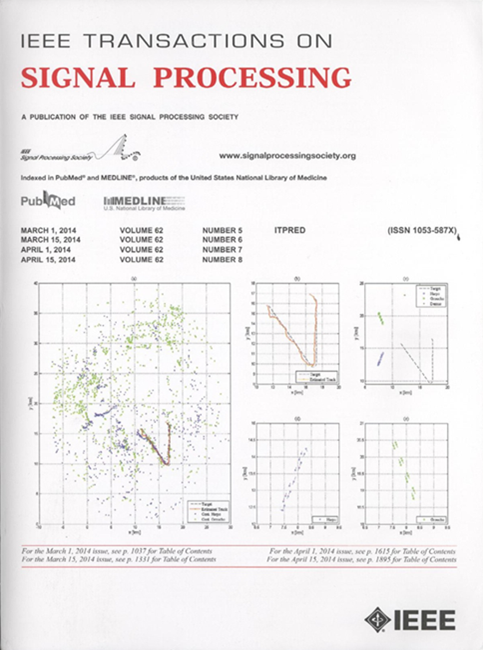Towards Inversion-Free Sparse Bayesian Learning: A Universal Approach
IF 5.8
2区 工程技术
Q1 ENGINEERING, ELECTRICAL & ELECTRONIC
引用次数: 0
Abstract
Sparse Bayesian Learning (SBL) has emerged as a powerful tool for sparse signal recovery, due to its superior performance. However, the practical implementation of SBL faces a significant computational complexity associated with matrix inversion. Despite numerous efforts to alleviate this issue, existing methods are often limited to specifically structured sparse signals. This paper aims to provide a universal inversion-free approach to accelerate existing SBL algorithms. We unify the optimization of SBL variants with different priors within the expectation-maximization (EM) framework, where a lower bound of the likelihood function is maximized. Due to the linear Gaussian model foundation of SBL, updating this lower bound requires maximizing a quadratic function, which involves matrix inversion. Thus, we employ the minorization-maximization (MM) framework to derive two novel lower bounds that diagonalize the quadratic coefficient matrix, thereby eliminating the need for any matrix inversions. We further investigate their properties, including convergence guarantees under the MM framework and the slow convergence rate due to reduced curvature. The proposed approach is applicable to various types of structured sparse signals, such as row-sparse, block-sparse, and burst-sparse signals. Our simulations on synthetic and real data demonstrate remarkably shorter running time compared to state-of-the-art methods while achieving comparable recovery performance.实现无反转稀疏贝叶斯学习:通用方法
稀疏贝叶斯学习(SBL)因其卓越的性能,已成为稀疏信号恢复的有力工具。然而,SBL 的实际应用面临着与矩阵反演相关的巨大计算复杂性。尽管为缓解这一问题做出了许多努力,但现有方法往往局限于特定结构的稀疏信号。本文旨在提供一种通用的免反演方法,以加速现有的 SBL 算法。我们在期望最大化(EM)框架内统一了具有不同先验的 SBL 变体的优化,其中最大化了似然函数的下限。由于 SBL 以线性高斯模型为基础,更新该下限需要最大化二次函数,其中涉及矩阵反转。因此,我们采用最小化-最大化(MM)框架,推导出两个新的下界,将二次系数矩阵对角化,从而消除了任何矩阵反转的需要。我们进一步研究了它们的特性,包括 MM 框架下的收敛保证以及曲率减小导致的收敛速度缓慢。所提出的方法适用于各种类型的结构稀疏信号,如行稀疏、块稀疏和突发稀疏信号。我们在合成数据和真实数据上进行的仿真表明,与最先进的方法相比,该方法的运行时间显著缩短,同时恢复性能相当。
本文章由计算机程序翻译,如有差异,请以英文原文为准。
求助全文
约1分钟内获得全文
求助全文
来源期刊

IEEE Transactions on Signal Processing
工程技术-工程:电子与电气
CiteScore
11.20
自引率
9.30%
发文量
310
审稿时长
3.0 months
期刊介绍:
The IEEE Transactions on Signal Processing covers novel theory, algorithms, performance analyses and applications of techniques for the processing, understanding, learning, retrieval, mining, and extraction of information from signals. The term “signal” includes, among others, audio, video, speech, image, communication, geophysical, sonar, radar, medical and musical signals. Examples of topics of interest include, but are not limited to, information processing and the theory and application of filtering, coding, transmitting, estimating, detecting, analyzing, recognizing, synthesizing, recording, and reproducing signals.
 求助内容:
求助内容: 应助结果提醒方式:
应助结果提醒方式:


